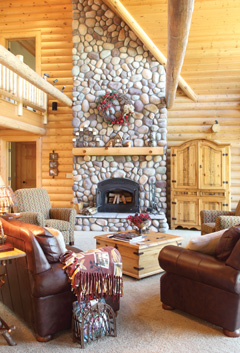
Log Versus Timber
The appeal of a log or timber home is the first indicator that such a dream dwelling is in a homeowner’s future. Both building materials captivate the imagination and conjure up images of days spent in leisure, enjoying beautiful mountain or lakeside vistas, watching wildlife, and generally relaxing. But which is best, log or timber?
Most often, the decision to build with log or timber comes down to that age-old bugaboo—pricing. Comparing the cost of log versus timber inevitably steers th
